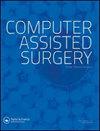基于中医分形理论的数字化舌图及舌苔纹理特征分析与识别。
IF 1.9
4区 医学
Q3 SURGERY
引用次数: 0
摘要
提出了简单分形维数用于分析数字化舌图特征和舌苔纹理,可在扩大样本量的条件下进一步建立客观的分类标准。然而,对简单分形维数的详细描述是有限的。因此,通过进一步计算数字化舌头图像的多重分形谱特征,可以设计BP (back propagation)神经网络模型分类器,对舌苔的薄/厚或油腻特征进行分类识别。在标准环境下采集了587张数字化舌图样本数据的分形维数。对样本数据的计算结果进行统计分析,观察分形维数对数字化舌图薄/厚、油腻特征的敏感性。由于重叠区域是由单个参数的取值范围造成的,因此进一步提出了数字化舌图多重分形谱的另外8个特征参数作为三层BP神经网络输入层的元素。针对数字化舌图和舌苔纹理特征,设计并训练了自动识别分类器。简单分形维数对数字化舌苔图像的薄/厚、油腻特征较为敏感,能较好地判断舌苔厚度特征。以多重分形谱特征参数作为BP神经网络模型识别的输入向量,可以有效提高舌膜纹理特征判断的准确率。本文章由计算机程序翻译,如有差异,请以英文原文为准。
Analysis and recognition of characteristics of digitized tongue pictures and tongue coating texture based on fractal theory in traditional Chinese medicine.
Simple fractal dimensions have been proposed for use in the analysis of the characteristics of digitized tongue pictures and tongue coating texture, which could further the establishment of objectified classification criteria under the conditions of expanding sample size. However, detailed descriptions on simple fractal dimensions have been limited. Therefore, BP (back propagation) neural network model classifiers could be designed by further calculation of the multiple fractal spectrum characteristics of digitized tongue pictures in order to classify and recognize the thin/thick or greasy characteristics of tongue coating.The fractal dimensions of sample data of 587 digitized tongue pictures were collected in a standard environment. A statistical analysis was conducted on the calculation results of the sample data, and the sensitivity of the fractal dimensions to the thin/thick and greasy characteristics of digitized tongue pictures was observed. As the overlap region resulted from a range of values of a single parameter, another eight characteristic parameters of the multiple fractal spectra of the digitized tongue pictures were further proposed as the elements in the input layer of the three-layers BP neural network. Automatic recognition classifiers were designed and trained for the characteristics of digitized tongue pictures and tongue coating textures.The simple fractal dimension was sensitive to the thin/thick and greasy characteristics of digitized tongue pictures and could better judge the characteristics of the thickness of the tongue coating. A classifier with characteristic parameters of multiple fractal spectra as the input vectors identified by the BP neural network models could effectively increase the accuracy rate judged by the characteristics of the tongue coating texture.
求助全文
通过发布文献求助,成功后即可免费获取论文全文。
去求助
来源期刊

Computer Assisted Surgery
Medicine-Surgery
CiteScore
2.30
自引率
0.00%
发文量
13
审稿时长
10 weeks
期刊介绍:
omputer Assisted Surgery aims to improve patient care by advancing the utilization of computers during treatment; to evaluate the benefits and risks associated with the integration of advanced digital technologies into surgical practice; to disseminate clinical and basic research relevant to stereotactic surgery, minimal access surgery, endoscopy, and surgical robotics; to encourage interdisciplinary collaboration between engineers and physicians in developing new concepts and applications; to educate clinicians about the principles and techniques of computer assisted surgery and therapeutics; and to serve the international scientific community as a medium for the transfer of new information relating to theory, research, and practice in biomedical imaging and the surgical specialties.
The scope of Computer Assisted Surgery encompasses all fields within surgery, as well as biomedical imaging and instrumentation, and digital technology employed as an adjunct to imaging in diagnosis, therapeutics, and surgery. Topics featured include frameless as well as conventional stereotactic procedures, surgery guided by intraoperative ultrasound or magnetic resonance imaging, image guided focused irradiation, robotic surgery, and any therapeutic interventions performed with the use of digital imaging technology.
 求助内容:
求助内容: 应助结果提醒方式:
应助结果提醒方式:


